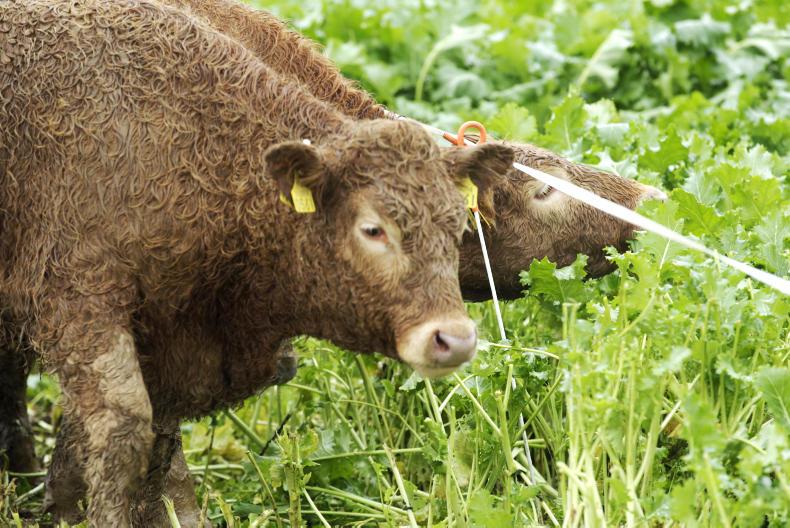However, for 2018 the EU is forecasting a small decline in production of 1.7%. This will follow four years of moderate growth.
Net beef production reached 7.9m tonnes in 2016, an increase of over 2% year-on-year. This rise came mainly from the herd destocking in the dairy sector and a higher slaughtering rate of female animals.
According to the Agriculture and Horticulture Development board, cattle supplies are expected to be very strong in Ireland this year, with prime cattle slaughter levels at their highest in a decade and growth is expected.
By the end of last year the suckler cow herd in the EU increased by another 80,000 heads, bringing up the total number to 12.4 million heads. The previous year saw a rise of 274,000.
Almost all EU countries slowed down their increases or even reduced their herd size, with the UK down 19,000. A small decline of 1% is expected in the suckler cow herd in 2017.
Outlook for exports
Live exports rose 23% above the high levels of 2015, with Turkey the main outlet for European cattle, taking 322,000.
This was followed by Israel and Lebanon, which took 176,000 155,000 heads respectively. Hong Kong became a more significant market last year.
Beef exports were up 18% last year and the EU Commission said it has a positive outlook for 2017.
Read more
Beef trends: competition lifts heifers to €4.00/kg
However, for 2018 the EU is forecasting a small decline in production of 1.7%. This will follow four years of moderate growth.
Net beef production reached 7.9m tonnes in 2016, an increase of over 2% year-on-year. This rise came mainly from the herd destocking in the dairy sector and a higher slaughtering rate of female animals.
According to the Agriculture and Horticulture Development board, cattle supplies are expected to be very strong in Ireland this year, with prime cattle slaughter levels at their highest in a decade and growth is expected.
By the end of last year the suckler cow herd in the EU increased by another 80,000 heads, bringing up the total number to 12.4 million heads. The previous year saw a rise of 274,000.
Almost all EU countries slowed down their increases or even reduced their herd size, with the UK down 19,000. A small decline of 1% is expected in the suckler cow herd in 2017.
Outlook for exports
Live exports rose 23% above the high levels of 2015, with Turkey the main outlet for European cattle, taking 322,000.
This was followed by Israel and Lebanon, which took 176,000 155,000 heads respectively. Hong Kong became a more significant market last year.
Beef exports were up 18% last year and the EU Commission said it has a positive outlook for 2017.
Read more
Beef trends: competition lifts heifers to €4.00/kg










SHARING OPTIONS